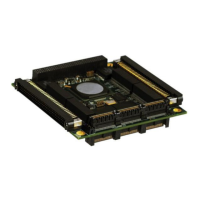
Do you have a question about the Curtiss-Wright Parvus SWI-22-10-10 and is the answer not in the manual?
| Brand | Curtiss-Wright |
|---|---|
| Model | Parvus SWI-22-10-10 |
| Category | Switch |
| Language | English |
Provides functional and technical descriptions of the SWI-22-10 hardware and operational information.
Symbols indicating important and potentially dangerous situations.
Describes the physical layout of the SWI-22-10-10 and SWI-22-10-01 cards.
Information on the factory-installed thermal plate for conduction cooling.
Lists required equipment for setting up the SWI-22-10 in a lab environment.
Provides warnings regarding Electrostatic Discharge (ESD) and handling the board.
Details the SWI-22-10-10 and SWI-22-10-01 breakout cable sets for testing.
Step-by-step guide for connecting and powering the SWI-22-10-10 for testing.
Step-by-step guide for connecting and powering the SWI-22-10-01 for testing.
Capability to erase configuration data for data security, including initiation and recovery.
Explains the different types of configuration files used by the switch.
Provides basic usage and configuration of the Command Line Interface (CLI).
Explains how to access and use the Web-based GUI for management.
Guides on changing hostname, admin password, and saving configurations.
Explains downloading, uploading, activating, and deleting configuration files.
Details part numbers and pinouts for connectors on the SWI-22-10-10 card.
Details part numbers and pinouts for connectors on the SWI-22-10-01 card.
Identifies common connectors like power, PCI, and PCI-Express.
Details the console port location and pin assignments on both card types.
Details the zeroize port location and pin assignments on both card types.
Details the LED port location and pin assignments on both card types.
Describes the behavior of port LEDs based on link status and activity.
Covers general specifications including applications and breakout cable set.
Details technical specs for Power, Switching Architecture, etc.
Details form factor, weight, and passive thermal management.
References connector details and lists options for card population.
Specifies environmental compliance with MIL-STD-810G standards.
Lists all supported Ethernet and networking protocol standards.
Information for identifying the product for technical support.
Contact information for Curtiss-Wright Technical Support.
Procedure for returning products for service, including RMA process.
Provides company address, phone, fax, and website for general inquiries.
Contact details for sales inquiries.
Contact details for product technical support.
Contact for providing feedback on the product.
Describes the industry-standard CLI format and its features.
Explains how to successfully enter CLI commands using specific syntax.
Explains the CLI's modes, command execution, and abbreviations.
Details how to use help commands and context-sensitive help in the CLI.
Summarizes CLI keys for line editing, history, help, and pagination.
Explains how the CLI session maintains and displays command history.
Covers terminal width, long lines, and pagination for CLI output.
Explains command structure, keywords, parameters, and syntax conventions.
Describes how Ethernet ports are identified by type, switch ID, and port number.
Explains how to filter command output using begin, include, or exclude strings.
Explains how to use the 'no' form of commands to reset or remove configurations.
Lists and describes the available EXEC mode commands.
Lists and describes commands for displaying system status and configuration.
Lists commands for configuring device features and options.
Explains commands for transferring configuration files.
Commands to reset specified settings to factory defaults.
Explains CLI modes and sub-modes for command access.
Demonstrates common CLI commands for tasks like resetting defaults and setting hostnames.
Explains the use of 'show' commands for system monitoring.
Describes using context-sensitive help for command discovery.
Explains how 'running-config' represents system configuration and its usage.
Outlines the process for configuring the system, including privilege levels and modes.
Explains advanced concepts like CLI modes and sub-modes.
Illustrates transitions between CLI modes and relevant commands.
Explains privilege levels and how they affect access to CLI commands.
Describes local user management, including creating, modifying, and deleting users.
Explains configurable terminal settings for sessions.
Details how to configure MOTD, Login, and Exec banners.
Explains how to access Parvus-specific CLI commands via debug mode.
Step-by-step instructions to enter the Parvus debug mode.
Instructions to exit debug mode and return to normal operation.
Provides an overview of Parvus CLI commands, including persistence and case sensitivity.
Displays current values of Parvus persistent options.
Resets all Parvus persistent options to their default values.
Displays contents of the eeprom.
Displays the contents of the fault log.
Enables or disables fault log wrapping.
Erases the entire fault log.
Shows the status of Parvus extensions.
Displays temperature readings.
Displays up-time and service life (operational hours).
Shows the Parvus version number.
Shows registers from Silicon Labs Si570 Programmable XO.
Increases frequency of Silicon Labs Si570 Programmable XO.
Describes zeroization parameters and features.